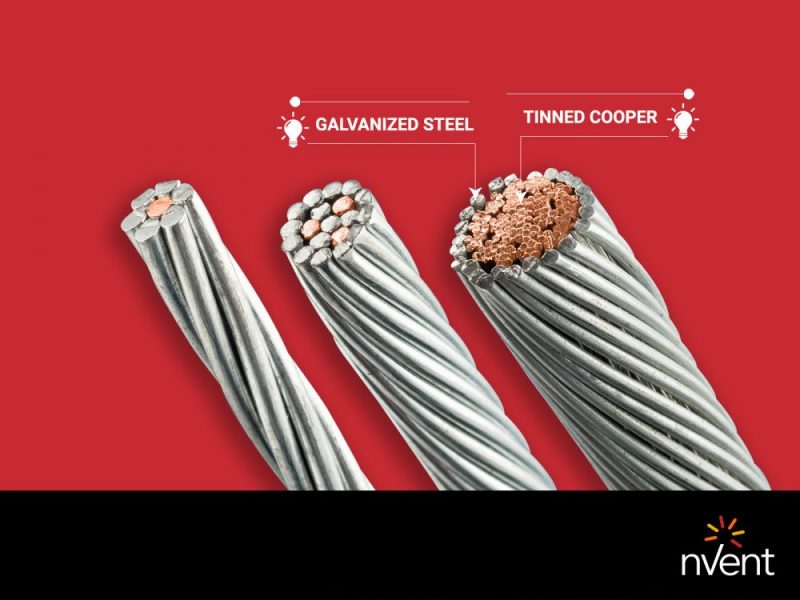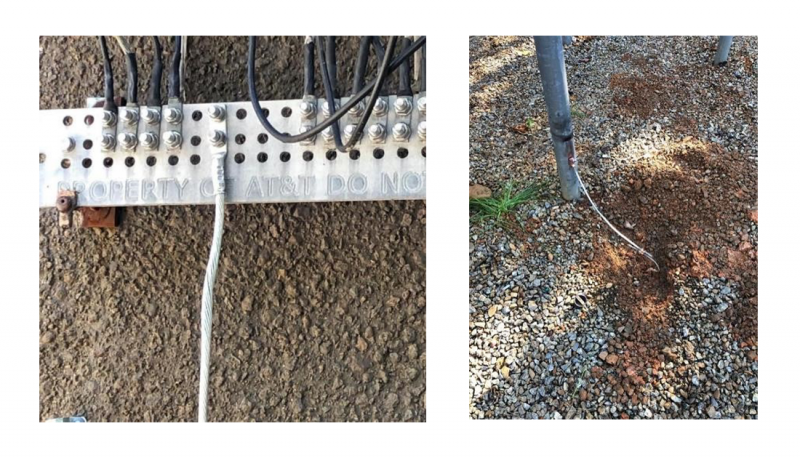Just Enough Copper to Keep Thieves Away
Telecommunications companies play a large role in our day-to-day lives. Cellular networks provide voice and data communications for business, emergency services, staying in touch with friends and family, browsing social media, staying up to date on the latest news and more. With the arrival of 5G technology, many more industrial applications will begin to depend on cellular networks as well. This may include security and surveillance applications, smart power utility grids and water and gas leak detection. For individuals, telecommunications network security advances could also mean more smart wearables, driverless cars and other novel applications.
One of the most important components of a telecommunications system is its grounding system. Grounding and bonding systems provide a preferred path to ground for lightning strikes, protecting telecommunications infrastructure and workers across the globe. When lightning strikes a well-grounded cell tower or other piece of equipment, the bulk of the electrical currents pass through the tower steel, grounding conductors and ground electrodes on their way to the ground instead of passing through sensitive equipment that could be damaged. This preferred path also keeps high-voltage electric currents away from people.
Copper is by far the best grounding conductor available due to its conductivity and flexibility. However, it is also an extremely valuable raw material. This makes copper grounding components frequent targets for thieves, who strip conductors and bars off cell towers and sell the metal for scrap. When thieves damage grounding systems, they leave cell towers at risk of damage from lightning strikes. A lightning strike not contained by a grounding system could endanger people and the systems they rely on each day.
Copper Theft Takes a Toll
A large telecommunications provider in the U.S. was experiencing a high level of copper theft, compromising its grounding systems and leading to exorbitant repair costs. The cost to replace stolen copper wire can be many times more than the price of the wire itself due to downtime, materials and labor. The telecommunications company saw an opportunity to reduce costs and protect its customers by adding theft deterrence to its grounding systems.
Thieves were taking the company’s ground bars mounted on towers and shelters, the conductive cables running from these ground bars to the below grade ground electrode system and cables connecting fences and ice bridge supports to below-grade ground electrodes. Both the ground bars and the cables contained high levels of copper making them valuable to copper thieves.
The company needed a solution that would deter thieves without disrupting the functioning of the important grounding systems while seamlessly integrating with its existing systems.

Reducing Theft
The nVent team realized it could help end the theft and replacement expenses for the company and help it better serve its customers by providing a theft-deterrent cable for the aboveground cables in the grounding systems.
The solution, the nVent ERICO Cu Bond Composite Cable, is made of tinned copper wire strands on the inside and a ring of tinned copper bonded steel strands on the outside. This cable contains enough copper and steel to achieve the conductivity and performance needed in grounding systems. The tinned copper bonded steel construction of the cable also protects against corrosion, which means that engineers can bury the cable directly in the ground without worrying about damage over time.
The steel strands on the outside of the theft deterrent cable give the cable the appearance of steel wire, which is unattractive to copper thieves. The outer strands of the cable are also magnetic, fooling thieves who test cables with a magnet to see if it is steel or copper. Even if resourceful thieves were to discover that there is copper on the inside of the theft-deterrent cables, the amount of copper inside would not be worth the effort of separating out the strands.

In addition to replacing copper cables with theft-deterrent cables, the telecommunications company determined that replacing copper ground bars with bars made from an alternative metal would go a long way towards preventing theft at its sites. However, replacing ground bars is not as simple as switching to another metal. Because ground bars are such an important safety component, they need to reach high levels of conductivity and corrosion resistance.
nVent engineers tested several different materials for conductivity and identified galvanized steel as a suitable alternative for the company. Galvanized steel met performance standards during corrosion testing to be an acceptable replacement. While the galvanized steel conductors have lower conductivity compared to copper conductors, they get the job done and have no value to thieves. nVent provided the company with nVent ERICO Theft Deterrent Galvanized Ground Bars prefabricated with Cu Bond Composite tails (for connecting to grounding cables) pre-welded to the bars.

A Tailored Solution
nVent worked to integrate both the theft-deterrent cable and the galvanized steel ground bars into the telecommunications company’s existing system by customizing the connections between components to meet the telecommunications company’s specific requirements. As a result, the company has seen copper theft drop close to zero at sites using nVent solutions.
nVent also provided onsite training to field technicians in large parts of the U.S. on integrating the theft deterrent system into the existing network. They also trained technicians on carrying out nVent ERICO Cadweld connections—the method used to connect wires to ground electrodes, ground bars and to aboveground fixtures.
Though thieves on the hunt for scrap metal may not care about dropped calls and spotty service, customers certainly do. With its systems protected from theft, the telecommunications company can stop worrying about lightning damage and compromised grounding systems, and continue focusing on the important work of maintaining essential connections for its customers.
Resources

